The Vietnam Temporary Residence Card (TRC) is a crucial document for foreigners seeking extended stays in this vibrant Southeast Asian nation. Whether you’re an expatriate worker, investor, or long-term visitor, obtaining a Vietnam TRC offers unparalleled convenience, eliminating the need for frequent visa renewals and enabling hassle-free multiple entries. This comprehensive guide demystifies the TRC application process, empowering you to navigate Vietnam’s residency regulations with confidence.
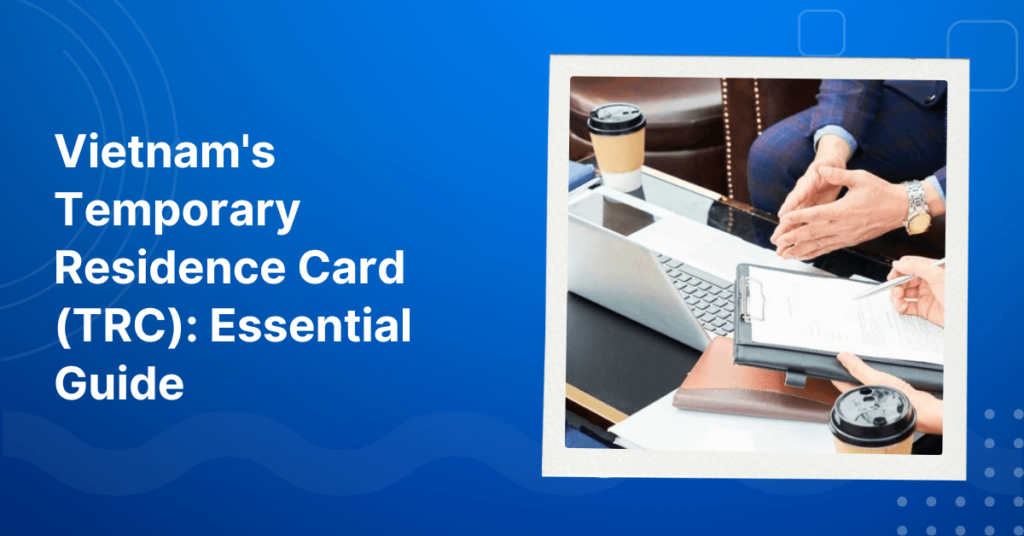
What is a Temporary Residence Card (TRC) in Vietnam?
How does Vietnamese law define a TRC?
A Temporary Residence Card (TRC) is an official document issued by the immigration authority or a competent body of the Ministry of Foreign Affairs. It permits foreigners to stay in Vietnam for a specified period of time.
Why is a TRC crucial for foreigners living in Vietnam?
Foreigners need a Temporary Residence Card (TRC) in Vietnam for several key reasons:
- Visa exemption: A TRC allows foreigners to live in Vietnam for an extended period without the need for frequent visa renewals, saving time and costs associated with obtaining and extending visas.
- Multiple entries: With a TRC, foreigners can enter and exit Vietnam multiple times during its validity without having to apply for a new visa each time, which is especially convenient for those with work or family commitments across countries.
- Business and personal benefits: The TRC simplifies business procedures, marriage, and other legal matters in Vietnam. It also allows cardholders to buy apartments, with potential future access to purchasing homes in Vietnam.
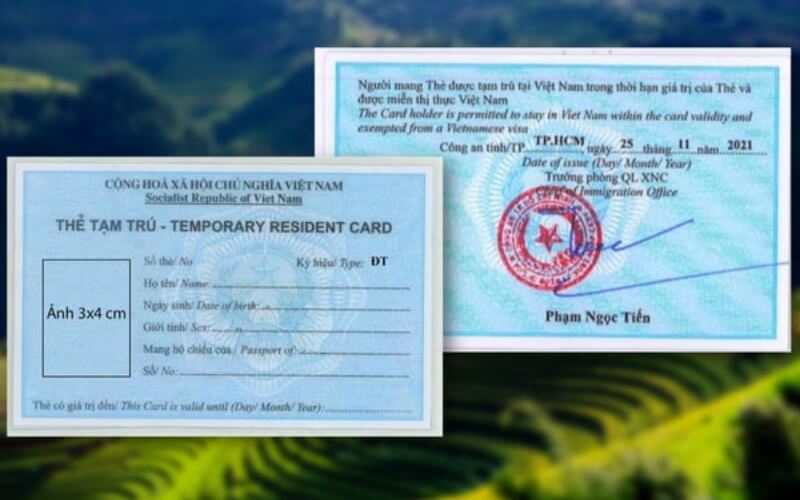
The 7 Key Benefits of Holding a Temporary Residence Card in Vietnam
Here are the seven main benefits of holding a Temporary Residence Card (TRC) in Vietnam:
- Visa Exemption: With a TRC, you can stay in Vietnam without worrying about frequent visa renewals, as it exempts you from visa requirements during its validity.
- Unlimited Entry and Exit: A TRC allows you to enter and leave Vietnam as often as needed without applying for a new visa each time.
- Property Ownership: TRC holders are eligible to purchase apartments, and may soon have the option to buy houses in Vietnam as well.
- Streamlined Business and Legal Processes: Having a TRC simplifies business operations, legal procedures, and even personal matters like marriage registration, easing your interactions with Vietnamese authorities.
- Cost Efficiency: With no need for regular visa extensions, a TRC helps you save both time and money.
- Family Sponsorship: TRC holders can sponsor their spouse and children under 18 to live in Vietnam, making it easier to keep family together.
- Access to Banking Services: A TRC allows you to open bank accounts and manage your finances in Vietnam, from receiving salaries to handling everyday transactions.
Who Can Apply for a TRC in Vietnam?
| Eligible Individuals | TRC Symbol | TRC Validity Period |
| Foreign members of diplomatic missions, consular offices, UN-affiliated organizations, intergovernmental organizations, and their accompanying spouses, children under 18, or domestic helpers | NG3 | Up to 5 years |
| Foreigners working with agencies under the Communist Party of Vietnam, National Assembly, Government, Vietnam Fatherland Front, Supreme People’s Court, Supreme People’s Procuracy, State Audit, ministries, and provincial authorities | LV1 | Up to 5 years |
| Foreigners working with political, social organizations, or the Vietnam Chamber of Commerce and Industry | LV2 | Up to 5 years |
| Foreign investors in Vietnam and foreign lawyers practicing in Vietnam | ĐT | Up to 5 years |
| Foreigners coming to Vietnam for internships or studies | DH | Up to 5 years |
| Foreign heads of representative offices or projects of international organizations or NGOs in Vietnam | NN1 | Up to 3 years |
| Foreigners heading representative offices, branches of foreign traders, or offices of economic, cultural, or other professional organizations in Vietnam | NN2 | Up to 3 years |
| Foreign resident journalists in Vietnam | PV1 | Up to 2 years |
| Foreign workers in Vietnam with work permits, employed by enterprises, or representative offices of foreign companies | LĐ | Up to 2 years |
| Spouses and children under 18 of foreigners holding LV1, LV2, ĐT, NN1, NN2, DH, PV1, LĐ visas or spouses, parents, children of Vietnamese citizens | TT | Up to 3 years |
Note:
- The validity of the Temporary Residence Card (TRC) must be at least 30 days shorter than the remaining validity of the passport.
- Foreigners whose TRCs have expired will be considered for reissuance of a new card.
Requirements and Conditions for Obtaining a TRC
General conditions: Can & Can’t
To be eligible for a Temporary Residence Card (TRC) in Vietnam, foreigners must meet the following conditions:
- The passport must have a minimum validity of at least 13 months. (If the passport is valid for exactly 13 months, the immigration authorities will issue a TRC valid for a maximum of 12 months.)
- Foreigners are required to complete the temporary residence registration process with the local police in the commune or ward where they are staying, in compliance with the law.
However, certain individuals will not be eligible for a TRC in Vietnam, including those who are:
- Under criminal investigation or involved as defendants in ongoing civil, economic, or labor disputes;
- Obligated to serve a criminal sentence;
- Required to comply with judgments in civil or economic cases;
- Subject to administrative penalties, tax obligations, or other financial liabilities under Vietnamese law.
Specific conditions for different categories
To comply with the provisions of the Law on Entry, Exit, Transit, and Residence of Foreigners in Vietnam, specific conditions for permanent residency are as follows:
Categories Eligible for Consideration for Permanent Residency:
- Foreigners who have made significant contributions to the development and defense of Vietnam and have been awarded an order or honorary title by the Vietnamese government.
- Foreign scientists and experts currently residing in Vietnam.
- Foreigners sponsored by their parents, spouses, or children who are Vietnamese citizens permanently residing in Vietnam.
- Stateless individuals who have been continuously residing in Vietnam since before the year 2000.
Conditions for Permanent Residency:
- Eligible foreigners under the above categories may be considered for permanent residency if they have legal accommodation and stable income to support their life in Vietnam.
- Foreign scientists or experts currently residing in Vietnam must be recommended by the Minister, heads of ministerial-level agencies, or agencies under the Government responsible for the relevant field of expertise.
- Foreigners sponsored by their parents, spouses, or children who are Vietnamese citizens must have continuously resided in Vietnam for at least three years.

Step-by-Step: How to Apply for Your Vietnam TRC
What documents do you need to prepare for Vietnam TRC?
According to Article 41 of the Law on Entry, Exit, Transit, and Residence of Foreigners in Vietnam, the following documents are required for a permanent residence application:
- Permanent Residence Application Form (Form NA12)
- Criminal record issued by the competent authority of the applicant’s home country.
- Diplomatic note from the embassy or consulate of the applicant’s home country, requesting the Vietnamese government to process the application for permanent residence.
- Three passport-sized photos (2×3 cm, white background, front-facing, with no head covering).
- Notarized copy of the passport.
- Proof of eligibility for permanent residence in accordance with Article 40 of the Law on Entry, Exit, Transit, and Residence of Foreigners in Vietnam.
- Sponsorship documents (Form NA11) for applicants whose parents, spouse, or children are Vietnamese citizens with permanent residency in Vietnam.
Important Notes:
- Any documents issued by foreign authorities must be translated into Vietnamese and legalized, unless exempt from legalization as per relevant regulations.
- For foreign nationals applying for permanent residence through family sponsorship, there must be proof of legal accommodation and stable income to ensure sufficient living conditions. The sponsor must have a permanent household registration in the province or city where the application is submitted.
- This comprehensive document checklist ensures that all necessary paperwork is in order to facilitate the permanent residence process in Vietnam.
Where and how should you submit your application?
Once you have prepared your complete application package as required, you must submit it at the Immigration Department of the Ministry of Public Security or at the immigration management office of the provincial or municipal police where the foreign national resides. The three main offices of the Immigration Department are located at the following addresses:
For applications in Hanoi:
- Address: 44-46 Trần Phú Street, Ba Đình District, Hanoi.
- Phone: +84 24 3825 7941.
For applications in Ho Chi Minh City:
- Address: 333-335-337 Nguyễn Trãi Street, District 1, Ho Chi Minh City.
- Phone: +84 8 3920 2300.
For applications in Da Nang:
- Address: 78 Lê Lợi Street, Thạch Thang, Hải Châu District, Da Nang.
After reviewing your application, the Immigration Department will issue a receipt (Form NB7) to the applicant.
If the application is incomplete, the staff member receiving the documents will guide the applicant on how to supplement the necessary documents. You will then need to prepare the additional materials and return to the Immigration Department to resubmit your application.
The application submission period for Temporary Residence Card is from Monday to Saturday morning each week (excluding holidays and Sundays).
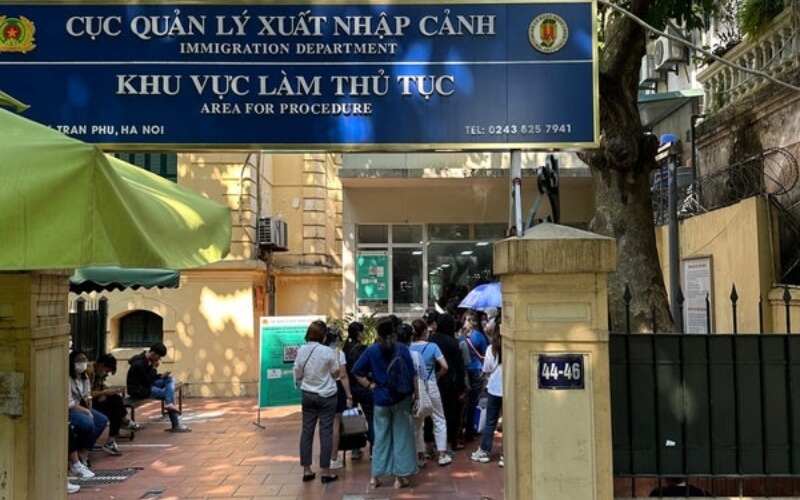
How long does processing typically take?
In-Person Submission: For applications submitted directly at the headquarters of the Immigration Department, the processing time is five working days, provided that all necessary documents are received.
Online Submission: When applications are submitted online via the National Public Service Portal or the Ministry of Public Security’s Public Service Portal, the processing time is also five working days, counting from the date of receipt of the complete application.
Postal Service: For additional document submissions through the public postal service, as notified by the Immigration Department via the National Public Service Portal or the Ministry of Public Security’s Public Service Portal (if applicable), the processing time remains five working days, starting from the date of receipt of the complete application.
Receiving the Result
On the date specified in your appointment notice, bring your receipt, identity card, or passport to present to the staff for verification.
If your Temporary Residence Card is approved, you will need to pay the fee, after which you will sign for and receive your result (regardless of whether you are granted the TRC or not).
TRC Costs: Fees and Charges Explained
What are the current application and processing fees?
According to Circular No. 219/2016/TT-BTC dated November 10, 2016, issued by the Minister of Finance, the fees for obtaining a Temporary Residence Card are as follows:
- Temporary Residence Card valid for 1 to 2 years: $145 per card.
- Temporary Residence Card valid for more than 2 years to 5 years: $155 per card.
Are there any additional charges to be aware of?
- Fee: $5 (Transferring the value of a visa, TRC, or remaining validity of temporary residence from an old passport to a new passport).
- Fee: $5 (Transferring the value of a visa or remaining validity of temporary residence from an old visa (with no more stamp spaces: entry verification, exit verification, temporary residence certification, temporary residence extension) to a new visa).
- Fee: $25 (Issuance of a single-entry visa).
- Fee: $25 (Visa issuance for individuals under 14 years old, regardless of duration).
- Fee: $50 (Issuance of a multiple-entry visa valid for no more than 90 days).
- Fee: $95 (Issuance of a multiple-entry visa valid for more than 90 days up to 180 days).
- Fee: $135 (Issuance of a multiple-entry visa valid for more than 180 days up to 1 year).

Who’s in Charge? Authorities and Legal Framework for TRCs
Which agencies are responsible for issuing TRCs?
The administrative body responsible for processing Temporary Residence Card (TRC) applications for foreigners in Vietnam is the Immigration Department under the Ministry of Public Security or the Immigration Offices of the provincial or municipal police.
What are the key laws and regulations governing TRCs?
- Law No. 47/2014/QH13.
- Circular No. 25/2021/TT-BTC.
- Law No. 51/2019/QH14.
- Law on Exit and Entry of Vietnamese Citizens and the Law on Entry, Exit, Transit, and Residence of Foreigners in Vietnam (Amended 2023) No. 23/2023/QH15.
- Circular No. 22/2023/TT-BCA.
Specific TRC Categories and Requirements
How do TRC requirements differ for foreign workers vs investors?
Temporary Residence Card for Investors (ĐT):
- ĐT1: Issued to foreign investors and representatives of foreign organizations investing in Vietnam with a capital contribution of over VND 100 billion or those investing in priority sectors.
- ĐT2: Issued to foreign investors and representatives of foreign organizations investing in Vietnam with a capital contribution ranging from VND 50 billion to under VND 100 billion, or those investing in encouraged sectors.
- ĐT3: Issued to foreign investors and representatives of foreign organizations with capital contributions between VND 3 billion and under VND 50 billion.
- ĐT4: Issued to foreign investors and representatives of foreign organizations investing in Vietnam with capital contributions of less than VND 3 billion.
Temporary Residence Card for Workers (LĐ)
- LĐ1: Issued to foreign workers in Vietnam who possess a valid work permit or a work permit exemption certificate.
- LĐ2: Issued to foreign workers in Vietnam who are not required to obtain a work permit.
Continue Learning: Vietnam Work Permits Guide 2024: Legal Requirements & Process
What unique conditions apply to spouses and dependents?
Temporary Residence Card for Family Members (TT):
- TT: Issued to spouses, children under 18 years of age of foreign nationals who hold a TRC or are Vietnamese citizens.
Temporary Residence Card for Other Categories:
- NN1, NN2: Issued to the heads of representative offices or projects of international organizations and NGOs in Vietnam.
- DH: Issued to students, interns, and trainees.
- PV1: Issued to resident journalists and foreign correspondents based in Vietnam.
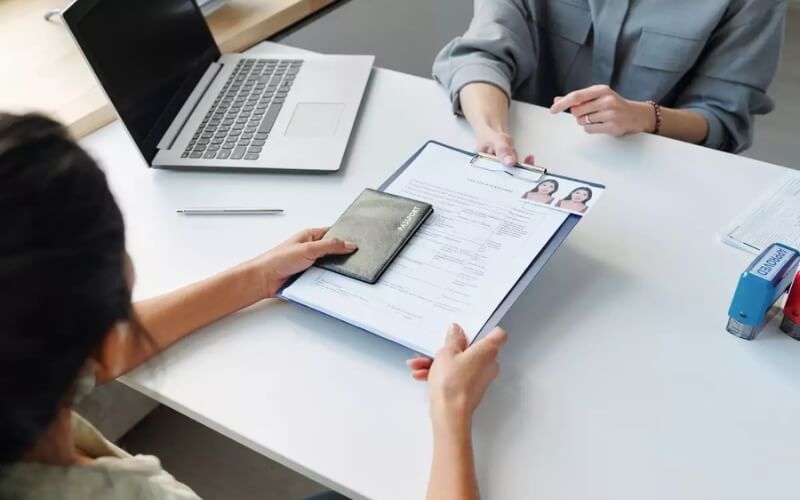
Maintaining Your Temporary Residence Card: Changes, Extensions, and Emergencies
When and how can you extend or change your TRC?
Step 1: Prepare the required documents
Ensure that your application complies with all legal requirements and includes all necessary paperwork.
Step 2: Submit your application
You can submit your application during business hours on weekdays at one of the two offices of the Immigration Department under the Ministry of Public Security:
- 44-46 Trần Phú Street, Ba Đình District, Hanoi
- 333-335-337 Nguyễn Trãi Street, District 1, Ho Chi Minh City
Alternatively, you can submit your application online through the National Public Service Portal or the Ministry of Public Security’s Public Service Portal, and then send any additional documents by postal service as per the instructions from the Immigration Department on the online portal.
Upon submission, the officer will check the legality and completeness of the application:
- If the application is complete and valid, it will be accepted. The officer will issue a receipt with an appointment for result collection and request the necessary fees. You can either pay the fees directly or make an online payment through the Public Service Portal, where you will receive an electronic receipt.
- If the application is incomplete or invalid, the officer will guide you on how to complete it or notify you via the Public Service Portal for revisions.
- If the application does not meet the requirements, it will be rejected, and you will receive a written explanation or an online notification stating the reason for rejection.
- If submitted online, you can request to receive the result via postal service and will need to cover the shipping fee.
- Submission hours: Monday to Saturday mornings (excluding public holidays and Tet).
Step 3: Collect the result
Applicants can pick up the result in person at the Immigration Department under the Ministry of Public Security. You will need to bring the appointment slip, identification documents, and payment receipt for verification. If opting for postal delivery, follow the instructions from the postal service provider.
If the extension is denied, a written explanation will be provided or a notification will be sent through the Public Service Portal, stating the reason for refusal.
Result collection hours: Monday to Friday (excluding public holidays and Tet).
This process ensures that your Temporary Residence Card extension or modification is handled smoothly and efficiently.
What should you do if your TRC is lost or damaged?
If your Vietnam Temporary Residence Card (TRC) is lost or damaged, follow these steps to get a replacement:
1. Report the Loss or Damage
- Immediate Notification: Report the loss or damage to the local police station where you reside. They will issue a confirmation of the report, which is necessary for the replacement process.
2. Prepare the Required Documents
- Application Form: Fill out the application form for a new TRC (Form NA8).
- Police Report: Include the confirmation of the report from the local police.
- Passport: Provide your valid passport with at least one year of validity remaining.
- Photos: Recent passport-sized photos (typically 2×3 cm).
- Proof of Residence: Written confirmation of your temporary residence from the local police.
- Additional Documents: Any other documents that were required for the original TRC application (e.g., work permit, investment certificate).
3. Submit the Application
- Where to Submit: Submit your application to the Immigration Department office in Hanoi or Ho Chi Minh City.
- Hanoi: 44-46 Trần Phú, Ba Đình.
- Ho Chi Minh City: 333-335-337 Nguyễn Trãi, Quận 1.
4. Processing Time
- Processing Period: The processing time for a replacement TRC is typically 5-7 working days.
5. Collect the New TRC
- Notification: You will be notified when your new TRC is ready for collection.
- Collection: Go to the Immigration Department office to collect your new TRC and pay any applicable fees.

Demystifying Visa Symbols on Your TRC
What do different visa symbols mean?
- A (Airport Transit Visa): Grants permission to transit through the international zone of a Schengen airport without entering the country.
- C (Short-Stay Visa): Allows the holder to stay in the Schengen Zone for up to 90 days within a 180-day period.
- D (Long-Stay Visa): Enables the holder to reside in a Schengen country for over 90 days.
- B1/B2 (Visitor Visa): B1 is designated for business visitors, while B2 is for tourists and individuals visiting for leisure purposes.
- F1 (Student Visa): Issued to academic students enrolled in full-time programs in the U.S.
- H1B (Specialty Occupation Visa): For foreign workers with specialized skills or qualifications.
- L1 (Intra-Company Transfer Visa): For employees transferring to a U.S. office within the same company.
- DL (Tourist Visa): Granted to tourists visiting Vietnam for leisure.
- DN (Business Visa): Issued to business travelers.
- LĐ (Work Visa): For foreign nationals employed in Vietnam.
- ĐT (Investor Visa): Designated for foreign investors in Vietnam.
- J1 (Exchange Visitor Visa): For individuals participating in cultural exchange programs.
- K1 (Fiancé(e) Visa): For foreign Fiancé(e) of U.S. citizens.
- M1 (Vocational Student Visa): For students enrolled in vocational or non-academic programs.
How do these symbols relate to Vietnamese immigration law?
- Purpose of Stay: Each visa code specifies the designated purpose of the foreign national’s visit to Vietnam, ensuring that the visa holder participates exclusively in the activities authorized under that specific visa classification.
- Duration and Restrictions: The visa code also dictates the allowed length of stay and any associated conditions, including permissions related to employment, education, or business operations.
- Legal Obligations: Visa holders must adhere to the conditions tied to their visa category to avoid legal complications, such as overstaying or participating in prohibited activities.
A clear understanding of these visa codes is essential for ensuring compliance with Vietnam’s immigration regulations and for proper visa application processing.
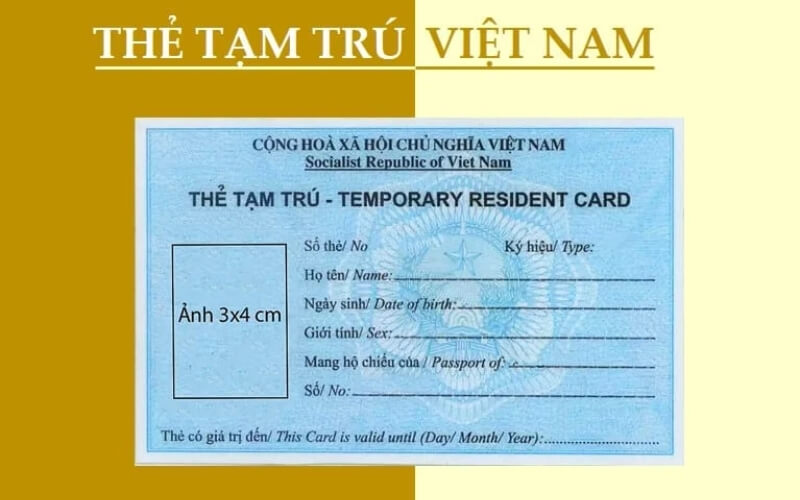
Top 3 Frequently Asked Questions About Vietnam TRC
Which foreign investors are eligible for a Temporary Residence Card (TRC)?
Currently, only the following categories of foreign investors are considered for a TRC:
- TRC Category ĐT1: Issued to foreign investors with an investment capital of VND 100 billion or more.
- TRC Category ĐT2: Issued to foreign investors with an investment capital between VND 50 billion and under VND 100 billion.
- TRC Category ĐT3: Issued to foreign investors with an investment capital between VND 3 billion and under VND 50 billion.
Are foreign investors with less than VND 3 billion eligible for a TRC in Vietnam?
Foreign investors contributing less than VND 3 billion are only eligible for an investment visa under the code ĐT4, and are not eligible for a Temporary Residence Card.
Do foreigners with a Vietnam TRC need a visa to enter the country?
While holding a TRC, foreigners can exit and re-enter Vietnam multiple times without needing to apply for a visa.
The Vietnam Temporary Residence Card offers a streamlined way for foreign nationals to live, work, and invest in Vietnam with ease. Whether you’re an investor, a worker, or joining family, knowing the right steps to secure your Vietnam TRC will make your stay smoother and more efficient.







Very good information
Thank you Phillip
Do holders of a new TRC card required to go to border and return to cancel previous visa and activate new TRC ??